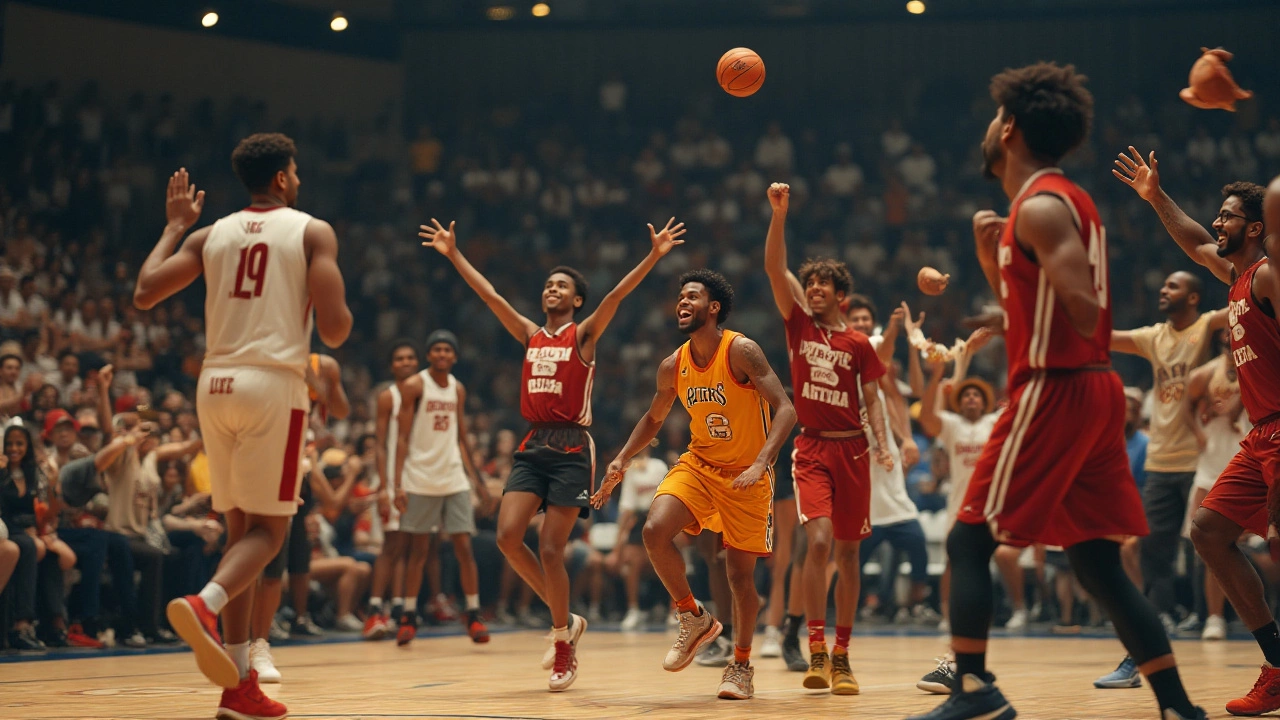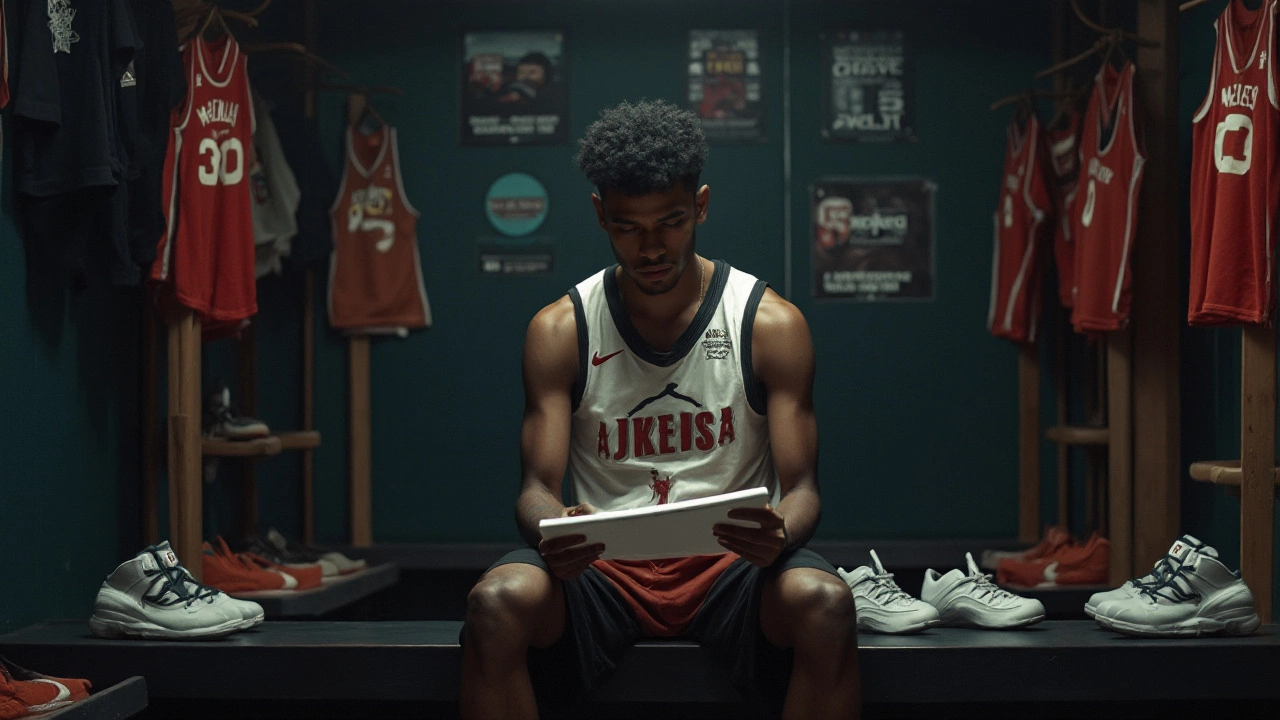For aspiring NBA players, the G League serves as a critical stepping stone, bridging the gap between college or international play and the pinnacle of professional basketball. For fans and players alike, understanding how these players earn their keep is as essential as following their on-court performance.
With its roots in providing a developmental platform, the G League's salary structure is both intriguing and complex. There are several layers of contracts, from standard player agreements to two-way contracts, each offering varying levels of financial security and potential for advancement.
This article dives into the nitty-gritty of G League compensation, unravels the economic realities for the league's athletes, and considers how these financial aspects influence their career decisions and development paths. Whether you're a devoted fan or a budding player eyeing a future in basketball, the G League salary breakdown is a fascinating insight into this unique sporting world.
- A Brief History of the NBA G League
- Standard Salary Structure
- Two-Way Contracts and Their Benefits
- Challenges and Opportunities for Players
- Comparing G League and NBA Salaries
A Brief History of the NBA G League
The NBA G League, initially formed as the National Basketball Development League (NBDL), began its journey in the 2001-2002 season. The league aimed to build a nurturing environment for players, coaches, and front-office staff aiming for a future in the NBA. Originally comprised of just eight teams primarily located in the southeastern United States, the league faced numerous challenges in its early days, including limited visibility and modest attendance at games.
By the 2005-2006 season, the league rebranded to the NBA Development League, or D-League, marking the beginning of a new era. With a goal of enhancing the quality of play and visibility, the league expanded slowly but strategically, aligning itself more closely with NBA teams. This introduced a unique dynamic where NBA teams began to see the league as a valuable farm system. As the number of teams grew, so did the number of dedicated fans eager to support future NBA stars honing their skills.
In 2017, the league underwent its most significant transformation by partnering with Gatorade and officially becoming the NBA G League. This partnership was not just a name change but an elevation in standards. The G League increased its focus on player development by enhancing its facilities, resources, and coaching. The NBA's active involvement in the league also contributed to better structures, leading to a sophisticated system for scouting and nurturing talent.
The Rise of Two-Way Contracts
A significant change occurred in 2017 when the NBA introduced two-way contracts. These contracts allowed players to split their time between an NBA team and its G League affiliate. It's a form of safety net, encouraging young talents to refine their skills while having backup if immediate breaks in the NBA do not materialize. Players like Alex Caruso and Duncan Robinson have showcased how instrumental the G League can be in achieving sustainable NBA careers.
"The G League represents an incredible opportunity for talented young players to develop their game while being a stone's throw away from the biggest stage," one NBA spokesperson noted.
From its early days of experimentation to its status as a well-respected development league, the NBA G League's evolution has been pivotal for many athletes. The league has become a vital hub for basketball talent, providing more opportunities than ever before while maintaining a laser focus on its founding mission: to cultivate basketball talent and strengthen the fabric of the basketball ecosystem globally.
Standard Salary Structure
Understanding the NBA G League salaries begins with the standard salary structure designed to remunerate players while also maintaining competitive balance. As the primary developmental circuit for the NBA, the G League offers both opportunity and challenges, especially when it comes to financial compensation. Players typically sign contracts that fall into several tiers, with the majority of athletes receiving a standard contract.
The average G League salary hovers around $37,000 per season. However, these contracts are usually less lucrative compared to international leagues or the NBA. This basic salary provides players with a foundation, though the real financial incentive often comes in the form of performance bonuses or the possibility of landing an NBA contract. Players on standard contracts are not tied to one team and may be called up to the NBA if their performance warrants it. Thus, while the pay might seem modest, the potential for advancement is an attractive hook for many aspirants aiming at these developmental circuits.
Interestingly, the G League offers Exhibit 10 contracts, adding a fascinating element to the salary structure. These are essentially one-year, non-guaranteed deals that incentivize players with training camp invites and potential bonuses. If a player is waived and assigned to a team's G League affiliate, they can earn a bonus ranging from $5,000 to $50,000 on top of their regular earnings.
"The G League provides a platform to showcase talent and a chance for growth both on and off the court," says Fred VanVleet, a prime example of G League success who has flourished in the NBA after honing his skills in the development league.Such contracts have gained popularity, highlighting the league’s investment in player growth and the team's desire to retain promising talent.
As part of the growth and competitiveness of the league, several teams have adopted the practice of increasing salaries based on seniority and performance. This results in a few lucky veterans earning up to $125,000. However, the process is selective, and not all players receive such lucrative offers. The financial arrangement also isn't just about the paycheck; it involves housing provisions and insurance, ensuring the athletes' well-being off the court.
All in all, the G League salary framework is a reflection of its dual role as a developmental and competitive league. While many players use the G League as a stepping stone to larger NBA contracts, others may take advantage of the financial opportunities in overseas leagues, depending on their professional aspirations and financial needs. The salary structure, while not overly generous by professional sports standards, remains an integral part of the G League's appeal, aligning with its purpose to nurture talent and promote basketball as a career.

Two-Way Contracts and Their Benefits
For many players in the NBA G League, two-way contracts offer a unique opportunity to carve out a path towards a long-term NBA career. Introduced in the 2017-2018 season, these contracts were designed to allow players to split their time between the G League and their parent NBA team. Such arrangements provide athletes with the best of both worlds: the stability of a G League salary and the allure of NBA exposure.
Players on two-way contracts can spend up to 45 days with the NBA team during the season, giving them the chance to showcase their skills at the highest professional level. This not only boosts their visibility but also allows them to experience the NBA atmosphere, training facilities, and coaching. The financial benefits are also notable – when with the NBA team, players are paid a prorated NBA salary, significantly higher than their G League pay.
The introduction of two-way contracts has dramatically reshaped the dynamics of the G League. For talent scouts and franchise executives, these contracts are golden tickets for harnessing potential talent. Teams can sign these players without exhaustively using their roster spots, providing flexibility in managing team compositions and cap space. For the players, it translates into not just better pay, but also a structured pathway to possibly securing a full NBA contract. The agreements have become a beacon of possibility for undrafted players or those who might otherwise be overlooked.
One crucial aspect of the two-way contract is the developmental focus it ensures. Players gain experiences that challenge them to refine their skills while benefitting from increased access to coaching from elite NBA staff. This type of exposure can be pivotal in a player's trajectory. As G League players enhance their craft through these dual environments, the potential stepping stone shifts to a full stride toward NBA stardom.
"The two-way contract is a game-changer," says renowned sports analyst Stephen A. Smith. "It bridges the gap between the promise of raw, talented athletes and the polished skillsets needed in the NBA."
Statistics illustrate the success of two-way contracts. A significant number of athletes have transitioned from two-way roles to securing permanent spots in NBA teams. According to a recent report, nearly 50% of two-way players moved to full-time contracts within two seasons of their initial sign. This conversion rate highlights just how effective these contracts are in nurturing talent ripe for the bigger stage.
In the competitive landscape of professional basketball, the two-way contract becomes not just a matter of financial upliftment for the players but also an evolutionary step for the game's organizational strategies. By leveraging these contracts, teams build a formidable reserve of potential talent, ready to step up as the demands of the season fluctuate. It's a system that not only fuels individual dreams but also powers the collective ambitions of the franchises in both leagues.
Challenges and Opportunities for Players
For many athletes in the NBA G League, the journey is fraught with challenges that test their resilience and determination. The first hurdle comes with adapting to the rigorous demands of professional play. Unlike college basketball, where most players are accustomed to balancing academics and sport, the G League demands full-time commitment, requiring players to quickly adjust to a lifestyle centered entirely around basketball. This transition can be taxing, mentally and physically, as they are expected to perform at high levels with constant travel and less glamorous accommodations compared to their NBA counterparts.
Additionally, the financial aspect presents its own set of challenges. While salaries in the G League have improved over the years, they are still significantly lower than those in the NBA. Many players earn enough to support a modest lifestyle, which places pressure on them to secure an NBA contract or find additional sources of income during the off-season. For some, this situation necessitates extensive financial planning and careful budgeting to extend their career pursuit without undue financial strain. This financial reality also affects their focus and stress levels as they weigh the potential risks and rewards of their chosen path.
Opportunities, on the other hand, are embedded within these very challenges. The G League acts as a proving ground, offering players invaluable exposure and experience. It is one of the few platforms where players can showcase their abilities to scouts and coaches, who are always on the lookout for promising talent to join the NBA. "The G League has become vital for player development," said Malcolm Turner, former NBA G League President, highlighting how it bridges the gap for many athletes aspiring for the NBA spotlight.
The potential of securing a two-way contract also presents a significant opportunity. Such contracts allow players up to 45 days with their NBA team while still participating in the G League. This dual exposure provides players with an invaluable learning curve, as they practice with seasoned professionals, bringing back lessons and rigor to enhance their performance in the G League. The structure of a two-way contract offers financial benefits and the chance to solidify a player’s reputation as an asset within the broader basketball league landscape.
Finally, the international appeal of the G League cannot be underestimated. A successful stint here can open doors to lucrative opportunities abroad, where many leagues offer competitive salaries and benefits. This global exposure not only aids in financial earnings but also enriches the professional experience of players, allowing them to bring back diverse styles and techniques to their game. The experience gained while playing internationally can be a huge advantage, setting players apart when re-entering the competitive scene back home.

Comparing G League and NBA Salaries
The topic of NBA G League salaries versus NBA salaries offers a fascinating glimpse into the financial ladder that players climb as they progress in professional basketball. While every aspiring player dreams of the lucrative contracts the NBA promises, the journey often starts with the more modest G League earnings. In the G League, players typically earn around $40,000 to $50,000 annually under a standard contract, which is a significant difference compared to the multimillion-dollar salaries many NBA players enjoy. This stark contrast reveals not only the financial disparities but also the dedication and sacrifice players endure to reach the big league.
A key aspect distinguishing the two leagues is the two-way contract, which bridges G League and NBA opportunities. These contracts allow players to earn a higher salary, potentially over $500,000, when spending time on an NBA roster, while still gaining valuable experience in the G League. The two-way contract is a significant boon for players, providing a taste of NBA life while offering more financial security than standard G League deals.
According to sources like ESPN, the minimum NBA salary for rookies in the 2023 season is over $900,000. In stark contrast, even the best-paid G League players outside of two-way contracts would find it challenging to approach such figures. Thus, aspiring NBA players in the G League must focus not only on honing their skills but also on navigating these smaller financial rewards until bigger opportunities arise. An interesting tidbit shared by a former G League coach in a
"The G League prepares players not just for the physical game, but the mental game of endurance through financial hardship."This insight reflects the reality faced by many players: the wait is taxing and not everyone makes that jump to an NBA roster.
The sizable difference in salary between the two leagues is further illustrated when considering the incentives and bonuses available to NBA players. These could include performance bonuses, endorsements, and other income streams that are not as readily available to G League athletes. While endorsement deals in the G League are on the rise, thanks to increased visibility and social media, they still pale in comparison to the national and global sponsorships enjoyed by NBA stars.
Beyond the raw numbers and perks, one must also consider the financial management and advisory support available to players. NBA rookies often have access to financial advisors and counselors through programs that help manage their newfound wealth, an advantage that most G League players do not have. This support is crucial as it ensures financial stability post-career, a luxury rarely accessible to those living on G League incomes.
Ultimately, the pay disparity between the G League and NBA signifies more than just monetary difference; it highlights the journey and perseverance required by basketball players moving through their careers. Attention should be paid to factors like exposure, training, coaching, and competition level, all of which add intrinsic, albeit non-monetary value, to a G League experience. Despite the financial hurdles, each G League player hopes to cash in on the bigger paycheck, representative of the success and skill that the NBA demands.
